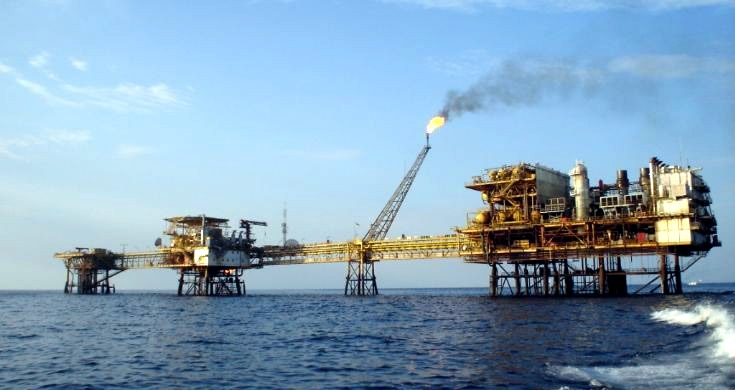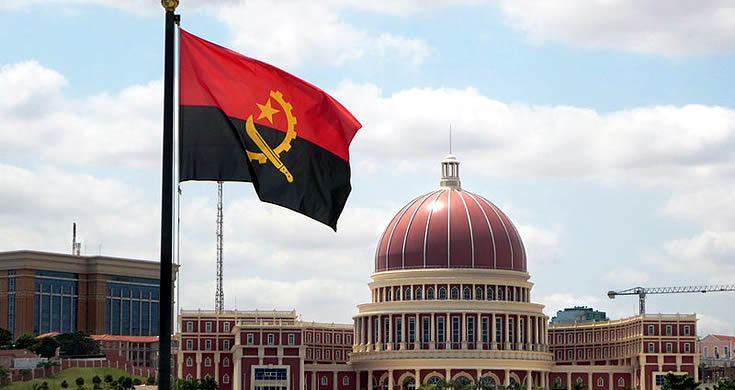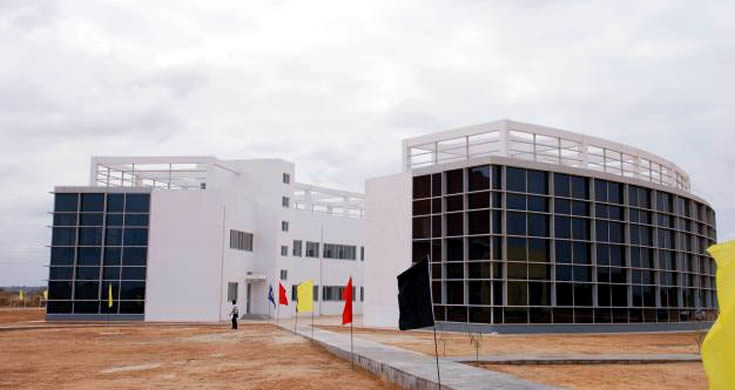Angola - Facts, History, Economy and Government
Angola - Essential facts for visitors, history, economy, government, demographics and media. Visitors country guide.
Visa Checker and On-line Application
Find Visa information for all countries and apply today. Focus on your trip, not paperwork. Let us help you easily get your travel documents.
VISAS | TRAVEL DOCUMENTS | PASSPORTS | EMBASSY LISTINGS

Angola - Essential Facts
-
Ratified Country Name - Republic of Angola
-
Population (Census of 2019) - 31.9 million
-
Capital City - Luanda
-
Land Area - 1.25 million square kilometres (481,354 square miles)
-
Official Language - Portuguese
-
Other Major Languages - Umbundu, Kimbundu, Kikongo
-
Major Religion - Christianity
-
Life Expectancy - 61 Years (2019)
-
Monetary Units - Kwanza (1 kwanza = 100 lwei)
-
Main Exports - Oil, diamonds, minerals, coffee, fish, timber
-
GNI per Capita - US $4,060 (world rank 91st)
-
Country GDP - $122.24 billion (world rank 61st)
-
Time Zone - Western African Time (UTC +1)
-
Driving Side - Right Hand Side
-
Internet TLD - .ao
-
International Dialling Code - +244
Demographics of Angola
It is estimated that Angola was host to 12,100 refugees and 2,900 asylum seekers by the end of 2007. 11,400 of those refugees were originally from the Democratic Republic of Congo (Congo-Kinshasa) who arrived in the 1970s .As of 2008 there were an estimated 400,000 DRC migrant workers, at least 30,000 Portuguese, and more than 20,000 Chinese living in Angola. Since 2003, more than 400,000 Congolese migrants have been expelled from Angola. Prior to independence in 1975, Angola had a community of approximately 350,000 Portuguese; currently, there are just fewer than 100,000 who are registered with the consulates, but migration from Portugal is increasing due to the debt crisis in there.
The languages in Angola are those originally spoken by the different ethnic groups plus Portuguese due to the country being a former Portuguese colony. The indigenous languages with the largest usage are Umbundu, Kimbundu, and Kikongo, in that order. Portuguese is the official language of the country and is widely spoken.
Angola’s population is estimated to be 18,498,000 (2009). It is composed of Ovimbundu (language Umbundu) 37%, Ambundu (language Kimbundu) 25%, Bakongo 13%, and 32% other ethnic groups as well as about 2% mestiços (mixed European and African) and 1% European. The population is forecast to grow to over 47 million people to 2060, nearly tripling the estimated 16 to 18 million in 2011. The last official census was taken in 1970, and showed the total population as being 5.6 million. The first post-independence census was held in 2013. Peliminary census results indicate a population of 24.6 million. This figure will be confirmed on full publication of 2013 Census report.
Economy of Angola
Angola faces the daunting tasks of rebuilding its infrastructure, retrieving weapons from its heavily-armed civilian population and resettling tens of thousands of refugees who fled the fighting. Landmines and impassable roads have cut off large parts of the country. Many Angolans rely on food aid. Much of Angola’s oil wealth lies in Cabinda province, where a decades-long separatist conflict simmers. The government has sent thousands of troops to subdue the rebellion in the enclave, which has no border with the rest of Angola. Human rights groups have alleged abuses against civilians.
A supplier of crude oil to the US and China, oil exports and foreign loans have spurred economic growth and have fuelled a reconstruction boom. Angola has a rich subsoil heritage, from diamonds, oil, gold, copper, as well as a rich wildlife, forest, and fossils. Since independence, oil and diamonds have been the most important economic resource.

The Economist reported in 2008 that diamonds and oil make up 60 percent of Angola’s economy, almost all of the country’s revenue and are its dominant exports. Growth is almost entirely driven by rising oil production which surpassed 1.4 million barrels per day in late 2005 and was expected to grow to over 2 million barrels per day by 2015. Control of the oil industry is consolidated in Sonangol Group, a conglomerate which is owned by the Angolan government. In December 2006, Angola was admitted as a member of OPEC.
Overall, Angola’s economy has undergone a period of transformation in recent years, moving from the disarray caused by a quarter century of civil war to being the fastest growing economy in Africa and one of the fastest in the world, with an average GDP growth of 20 percent between 2005 and 2007. In the period 2001-2010, Angola had the world’s highest annual average GDP growth, at 11.1 percent. In 2004, China’s Eximbank approved a $2 billion line of credit to Angola. The loan is being used to rebuild Angola’s infrastructure, and has also limited the influence of the International Monetary Fund in the country.
The economy grew 18% in 2005, 26% in 2006 and 17.6% in 2007. However, due to the global recession the economy contracted an estimated 0.3% in 2009. The security brought about by the 2002 peace settlement has led to the resettlement of 4 million displaced persons, thus resulting in large-scale increases in agriculture production. Before independence in 1975, Angola was a breadbasket of southern Africa and a major exporter of bananas, coffee and sisal, but three decades of civil war (1975-2002) destroyed the fertile countryside, leaving it littered with landmines and driving millions into the cities. The country now depends on expensive food imports, mainly from South Africa and Portugal, while more than 90 percent of farming is done at family and subsistence level.
Government of Angola
Eduardo dos Santos, of the ruling MPLA, is the President of Angola. The MPLA won a landslide victory in parliamentary elections held in September 2008, the first such polls to be held in the country for 16 years. long-awaited presidential elections were expected to be held in 2009, but were delayed, and in January 2010, parliament approved a new constitution abolishing direct elections for the president. Instead, the presidency will now automatically be filled by the top-ranking candidate of the party winning the parliamentary election.

The MPLA won the 2012 election comfortably, guaranteeing My Dos Santos another five-year term in office. The new constitution also strengthens the presidency’s powers, prompted the main opposition Unita party to accuse the government of “destroying democracy” with the new basic law. In early 2011 a social media campaign calling for protests to end Mr Dos Santos’ 32-year rule gathered some momentum, but petered out amid what the Human Rights Watch international monitoring group called a “campaign of intimidation” against demonstrations.
In the first contested presidential election in 1992 Mr Dos Santos narrowly beat Unita leader Jonas Savimbi, who rejected the result and resumed guerrilla war. There was no second round of voting in the poll, although Mr Dos Santos was recognised internationally as Angola’s president. Born in 1942, Mr Dos Santos joined the MPLA’s guerrilla army at the age of 19. In the former Soviet Union he trained in oil engineering and radar technology. He held ministerial posts before becoming president.
Media of Angola
Television, the private press, and internet access are very limited outside Luanda. Angola’s only daily newspaper, Jornal de Angola, and the terrestrial TV service TPA are state-owned and rarely criticise the government. State-run Radio Nacional de Angola (RNA) is the only outlet to offer programmes in indigenous languages such as Bantu. Private stations operate in the main cities, including Catholic station Radio Ecclesia, but RNA is the only available broadcaster across much of the country.

The constitution provides for freedom of expression. However, Human Rights Watch (2012) says the media face a “wide array of restrictions that impair free expression and encourage self-censorship”. Nevertheless, several private newspapers and radio stations have carried criticism of the government.
Pay-TV services are operated by MultiChoice Angola and TV Cabo; they carry some Brazilian and Portuguese channels. There were just over 744,000 internet users by the end of 2011 Internetworldstats.com). The state controls all media with nationwide reach, including radio, the most influential medium outside the capital.
History of Angola
Angola is re-building its country after the 27 year civil war ended in 2002. Following independence from Portugal in 1975, fighting between the MPLA led by Jose Eduardo Dos Santos and UNITA, led by Jonas Savimbi, broke out. The Civil War was kept alive with the involvement of the Aparthied South African military, funded by the United States Government and Cuban military funded by the then Soviet Union. MK, the military wing of the ANC also fought alongside Cuban soldiers. It is estimated that up to 1.5 million lives were lost during this time and 4 million people "displaced. Jonas Savimbi was eventually captured and killed in 2002, ending insurgency. President Dos Santos has led the MPLA to rule in legislative elections since 2008.
The Portuguese were present in some, mostly coastal, points of the territory of what is now Angola, from the 16th to the 19th century, interacting in diverse ways with the peoples that lived there. In the 19th century they slowly and hesitantly began to establish themselves in the interior, too. In 1951, the colony was designated as an overseas province, called Overseas Province of Angola.

Political organisations first appeared in the 1950s and began to make organised demands for self-determination, especially in international forums such as the Non-Aligned Movement. The Portugese Regime meanwhile, refused to accede to the demands for independence, provoking an armed conflict that started in 1961 when black guerrillas attacked both white and black civilians in cross-border operations in northeastern Angola. The war came to be known as the Colonial War. In this struggle, the principal protagonists were the MPLA (Popular Movement for the Liberation of Angola), founded in 1956, the FNLA (National Front for the Liberation of Angola), which appeared in 1961, and UNITA (National Union for the Total Independence of Angola), founded in 1966. After many years of conflict that lead to the weakening of all the insurgent parties.
Angola gained its independence on 11 November 1975, after the 1974 Coup d'etat in Lisbon, Portugal, which overthrew the Portuguese regime headed by Marcelo Caetano. Portugal’s new revolutionary leaders began in 1974 a process of political change at home and accepted its former colonies’ independence abroad. There was a basic recognition that the Portuguese ‘homeland’ could not realistically afford to continue its colonial rule in Africa, and the former Portuguese colony of Mozambique gained independence at the same time.